SRL Network

Lack of diagnostic capacity is a crucial barrier preventing from an effective response to the challenges of TB-HIV and drug-resistant TB (DR-TB), with less than 8% of the estimated burden of DR-TB patients currently being detected. Several operational research studies conducted in different settings have shown that lack of laboratory capacity is the main bottleneck also for the surveillance of resistance to anti-TB drugs (DRS), whereas estimation models and projections have confirmed that an effective response to the diagnostic challenges of TB-HIV and DR-TB requires urgent and massive scale-up of laboratory services. However, establishing, equipping, financing, and ensuring sustainability of appropriate laboratory networks are challenging, complex and expensive. Hence, strong and tailored interventions to expand TB laboratory services are needed and address different tiers of laboratories with different levels of testing.
Towards these aims, the TB Supranational Reference Laboratory Network (SRLN) was created in 1994 as a sub-group of the WHO/Global Laboratory Initiative (GLI) in order to support the WHO/IUATLD Global Project on TB drug resistance surveillance and with the objectives to estimate the magnitude of drug resistance globally and provide data to inform WHO policy decisions.
Since 1994 the SRLN continues to be a key technical resource in support to the strengthening of the laboratory capacity in countries. Under WHO coordination and support, the SRLN network has expanded from initial 14 to actual 30 Supranational Reference Laboratories (SRLs), 2 Candidate-SRLs, and one National Centre of Excellence, largely driven by regional initiatives and institutional interest in joining the WHO SRL network.
Since 2010, new Terms of Reference as well as new Eligibility and Inclusion Criteria for the SRLN have been developed. Formal collaboration agreements (English, French) now need to be established between the SRL and the National Health Authority or Ministry of Health acting as TB Reference Laboratory at National level (NRL): each SRL is linked to at least two NRLs and hence represents the preferred technical partner for laboratory scale-up and capacity development in countries, playing a critical role in strengthening national laboratory networks as a well as surveillance systems to monitor drug resistance.
Improved co-ordination of technical assistance provided by the SRLs remains a key priority for the network. To this aim, a Global Repository of technical reports from the SRLs and collaborative Partners has been established and is publicly available, which should constitute a key instrument for the coordination and continuous monitoring of SRLN activities globally.
A time-limited SRLN task-force was established in 2012 to develop a business plan to facilitate global laboratory strengthening efforts for high TB burden settings and low- and middle-income settings, and to describe a sustainable funding model for the SRLs and the network. Based on available resources, twelve SRLs are funded by the WHO/ in the period 2013-2014 for laboratory strengthening and DRS activities in 36 countries (18 high MDR-TB burden countries), through different donors and funding schemes. Read more
Useful Links
- Report on the activities of the SRL 2012-2013
- Global Repository of Technical Reports from the SRLs and Collaborative Partners
- Standardised country visit report from SRL and other collaborative Partners
- A standardised instrument for TB laboratory networks assessment: English, French
- A GLI tool for a step-wise process towards TB laboratory accreditation
- GLI technical documents and tools

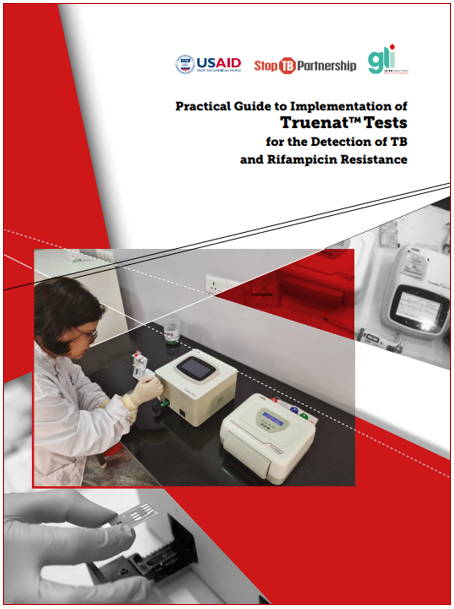 Practical Guide to Implementation of Truenat tests
Practical Guide to Implementation of Truenat tests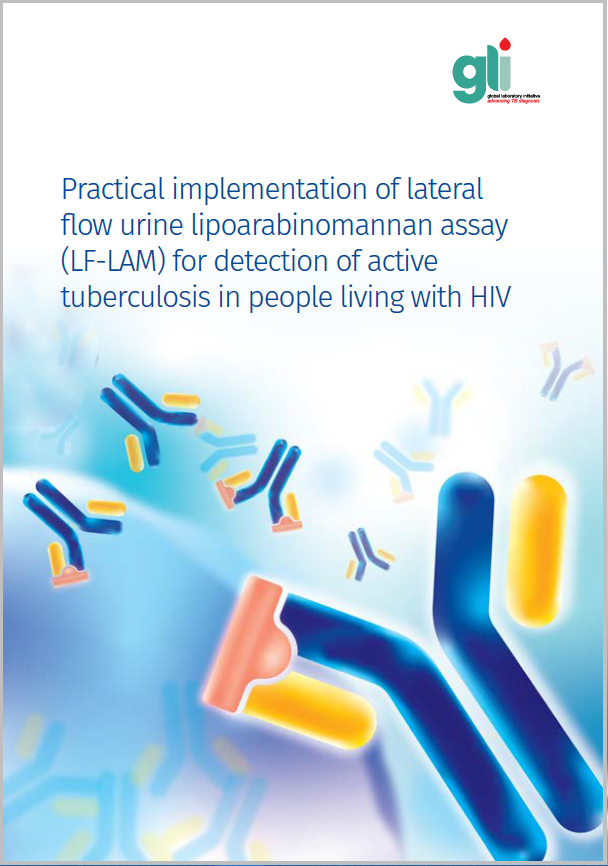 Practical implementation of LF-LAM for detection of active TB in people living with HIV
Practical implementation of LF-LAM for detection of active TB in people living with HIV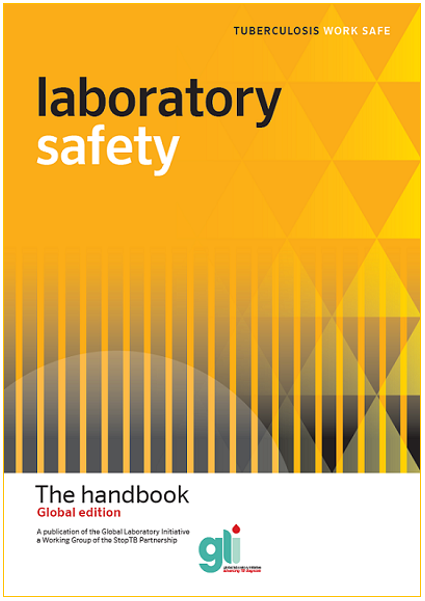 GLI TB Laboratory Safety Handbook
GLI TB Laboratory Safety Handbook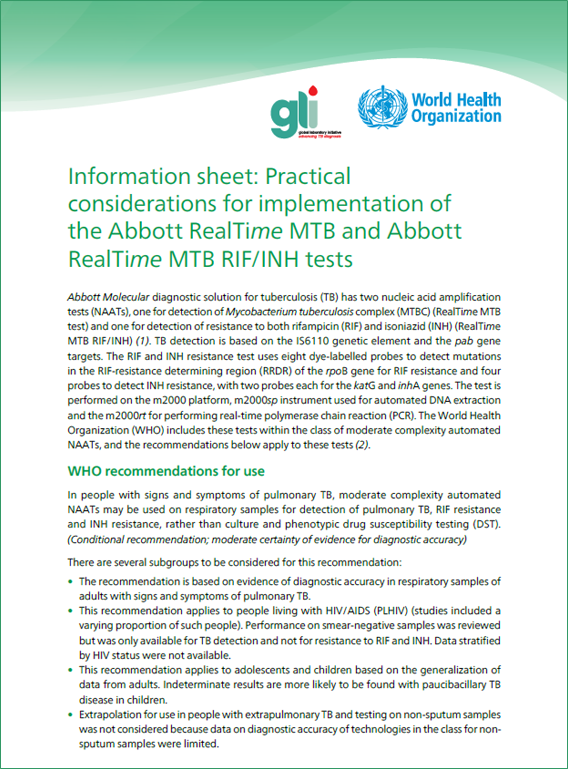 Practical considerations for implementation of the Abbott RealTime MTB and Abbott RealTime MTB RIF/INH tests
Practical considerations for implementation of the Abbott RealTime MTB and Abbott RealTime MTB RIF/INH tests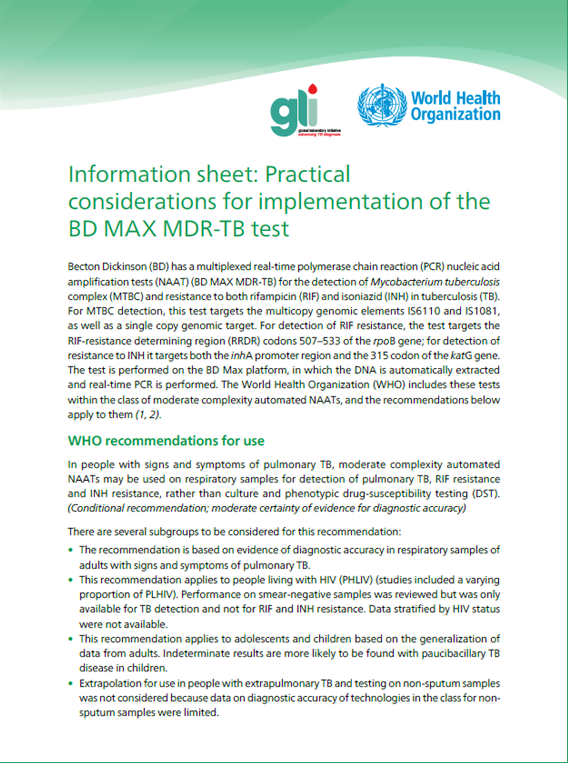 Practical considerations for implementation of the BD MAX MDR-TB test
Practical considerations for implementation of the BD MAX MDR-TB test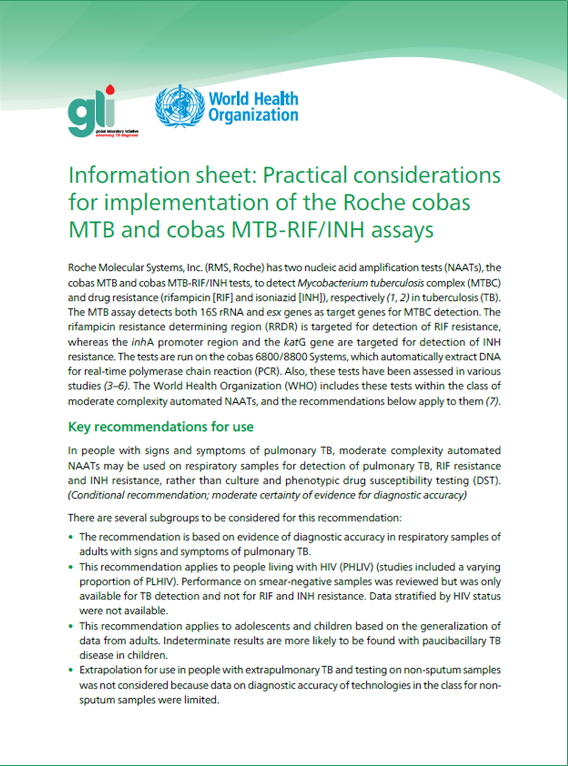 Practical considerations for implementation of the Roche cobas MTB and cobas MTB-RIF/INH assays
Practical considerations for implementation of the Roche cobas MTB and cobas MTB-RIF/INH assays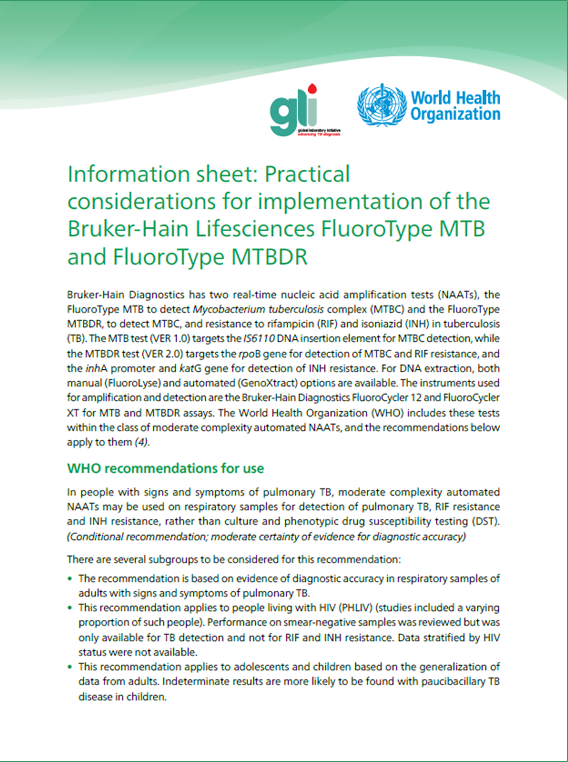 Practical considerations for implementation of the Bruker-Hain Lifesciences FluoroType MTB and FluoroType MTBDR
Practical considerations for implementation of the Bruker-Hain Lifesciences FluoroType MTB and FluoroType MTBDR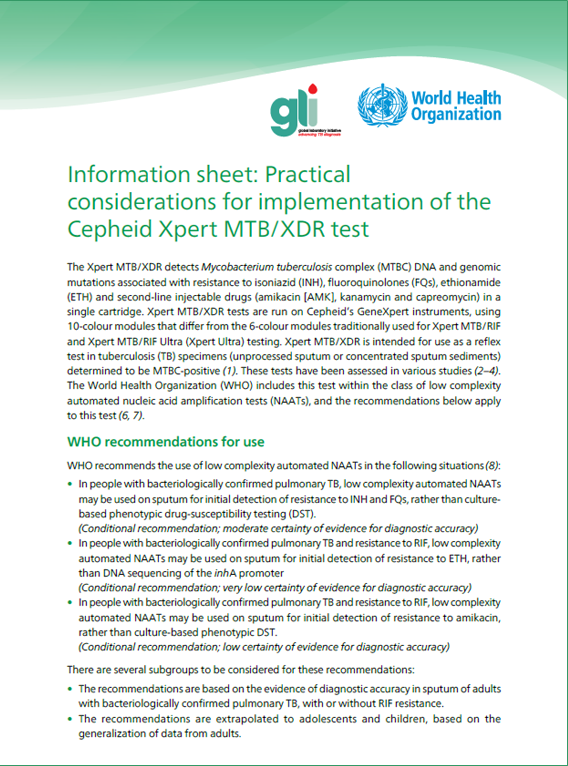 Practical considerations for implementation of the Cepheid Xpert MTB/XDR test
Practical considerations for implementation of the Cepheid Xpert MTB/XDR test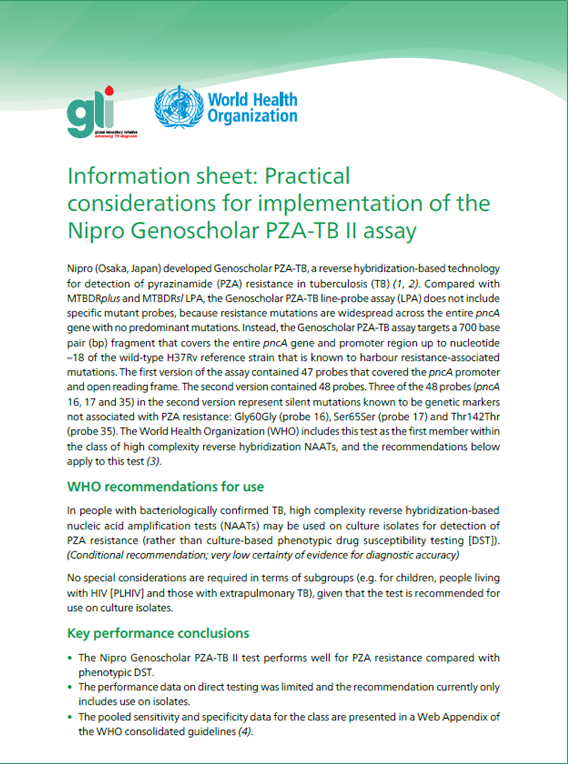 Practical considerations for implementation of the Nipro Genoscholar PZA-TB II assay
Practical considerations for implementation of the Nipro Genoscholar PZA-TB II assay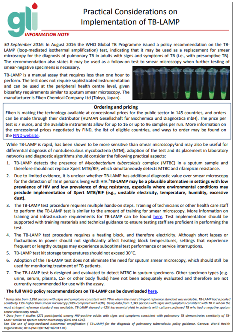 Practical considerations for implementation of the loop-mediated isothermal amplification (TB-LAMP) test
Practical considerations for implementation of the loop-mediated isothermal amplification (TB-LAMP) test